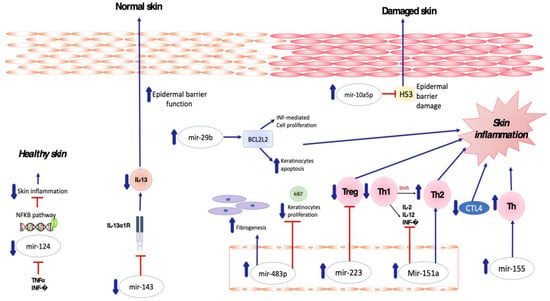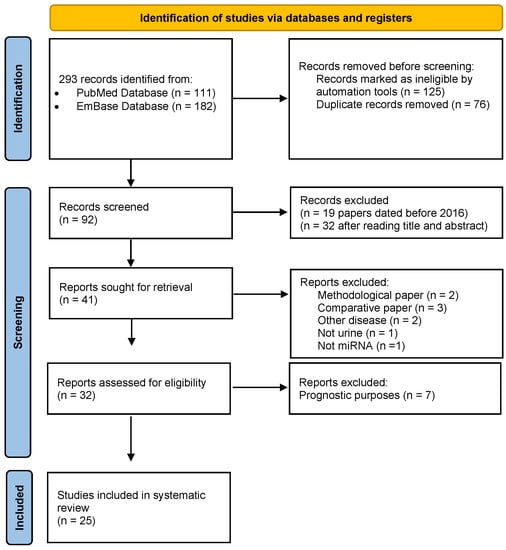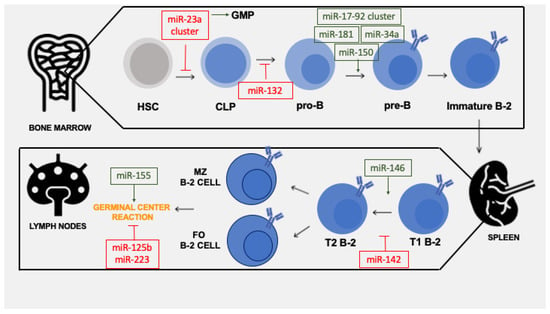MicroRNA in Health and Tumor
A topical collection in Biomedicines (ISSN 2227-9059). This collection belongs to the section "Immunology and Immunotherapy".
Viewed by 8462Editor
Interests: tumors; cancer research; cell biology; cancer diagnostics; cancer genetics; molecular biology; mouse model
Special Issues, Collections and Topics in MDPI journals
Topical Collection Information
Dear Colleagues,
MicroRNAs (miRNAs), short non-coding RNA, are involved in gene regulation, especially at the post-transcriptional level, and play a key role in a wide number of biological processes including differentiation, development, inflammation, immune response, drug resistance, and are usually dysregulated in many types of cancer. Moreover, miRNAs are differentially expressed in tumors compared to normal human tissues. Some of these altered miRNAs are overexpressed and known as oncomiR, which quicken tumor development, progression, dissemination. Contrarily, those that are downregulated in cancer patients are known as tumor suppressors. MiRNAs are also studied as biomarkers in clinical diagnosis and prognosis as well as indicator of treatment outcome and can be secreted as active molecule by different cell types. These “circulating miRNAs” are detected in various body fluids, including peripheral blood, saliva, urine, breast milk and represent specific, sensitive, and easy-to-detect biomarkers for clinical diagnosis or prognosis in cancers. Therefore, the accurate analysis of miRNAs expression and regulation from cancer patients might be a useful tool to develop personalized medicine in the future.
This Topical Collection aims to focus on the role of miRNAs in controlling pivotal biological mechanisms that lead to oncogenic transformation, including tumor formation, growth and dissemination, therapy resistance, as well as diagnostic and prognostic significance in different cancer subtypes. Original research manuscripts and comprehensive reviews are both welcomed for this call.
Dr. Francesca Lovat
Collection Editor
Manuscript Submission Information
Manuscripts should be submitted online at www.mdpi.com by registering and logging in to this website. Once you are registered, click here to go to the submission form. Manuscripts can be submitted until the deadline. All submissions that pass pre-check are peer-reviewed. Accepted papers will be published continuously in the journal (as soon as accepted) and will be listed together on the collection website. Research articles, review articles as well as short communications are invited. For planned papers, a title and short abstract (about 100 words) can be sent to the Editorial Office for announcement on this website.
Submitted manuscripts should not have been published previously, nor be under consideration for publication elsewhere (except conference proceedings papers). All manuscripts are thoroughly refereed through a single-blind peer-review process. A guide for authors and other relevant information for submission of manuscripts is available on the Instructions for Authors page. Biomedicines is an international peer-reviewed open access monthly journal published by MDPI.
Please visit the Instructions for Authors page before submitting a manuscript. The Article Processing Charge (APC) for publication in this open access journal is 2600 CHF (Swiss Francs). Submitted papers should be well formatted and use good English. Authors may use MDPI's English editing service prior to publication or during author revisions.
Keywords
- microRNAs
- solid tumor
- hematologic malignancies
- cellular pathways
- developmental pathways
- gene expression
- cancer genetic
- liquid biopsy
- biomarkers
- mouse model
- drug resistance









